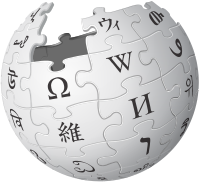
Photo from wikipedia
1576 www.thelancet.com Vol 393 April 20, 2019 Do we really need democracy? Clashes between populist political movements and liberal institutions have raised urgent questions about how human beings should be… Click to show full abstract
1576 www.thelancet.com Vol 393 April 20, 2019 Do we really need democracy? Clashes between populist political movements and liberal institutions have raised urgent questions about how human beings should be governed. According to an Article by Thomas J Bollyky and colleagues in The Lancet, democracy is good for public health. Using causespecific mortality and HIV free life expectancy estimates from the Global Burden of Diseases, Injuries, and Risk Factors Study (GBD) 2016, and information on regime type from the Varieties of Democracy (VDem) project, Bollyky and colleagues analysed the association between democratisation and population health in 170 countries between 1980 and 2016. They found that adult HIVfree life expectancy improved faster in developing countries that transitioned to democracy in the past halfcentury. The quality of democratic life, particularly free and fair elections, accounts for 22% of the variance in cardiovascular disease over time within countries, 18% of the variance in traffic injuries, 17% of the variance in tuberculosis, 10% of the variance in cancer, and a smaller fraction for other, mainly noncommunicable, diseases included in the study. This is far more than the gross domestic product (GDP), which accounted for only 11% of the variance in cardiovascular diseases, and only 6% of the variance in cancers, for example. The quality of democracy appears not to be associated with increases in GDP per capita, but is associated with declines in mortality from cardiovascular disease and increases in government health spending. The integrity of these findings depends on the data sources. The GBD 2016 and VDem databases both use models with various assumptions, and the mismeasurement of democracy, in particular, could bias the results. More open, democratic countries allow more complaints about human rights abuses, which could make these countries seem more autocratic than they are. Staunch US military allies might receive less human rights scrutiny and more development aid. The aid would be expected to improve overall health, and the reduced scrutiny could generate artificially rosy democracy measures. The effect of these various biases would weaken the observed effect of democratic performance on health. Thus, the relationships measured by Bollyky and colleagues might be even stronger. Bollyky and colleagues maintain that democracy probably functions like Adam Smith’s invisible hand, which creates equilibrium between supply and demand. But where the invisible hand regulates markets for the things we want, the invisible hands of scandal, media exposure, elections, and reform help to regulate the health systems— both public and private—that deliver the care we need. Historians have shown how expansion of the franchise and civil rights to all white men, and eventually to women and people of colour, played a major role in improving health in the UK and the USA. Bollyky and colleagues’ new study suggests the same applies globally. These findings extend Bollyky’s 2018 historical survey, which describes how, during the past century and a half, mortality in highincome countries declined and health systems improved in parallel with rising incomes and better living conditions, in what economist Angus Deaton has called the “Great Escape” from poverty and illness. Beginning in the 1980s, the international donor community, confronted with stubbornly high child death rates in poor regions of Africa, Asia, and Latin America, decided to take a Good news for democracy 2 Gilboa SM, Salemi JL, Nembhard WN, Fixler DE, Correa A. Mortality resulting from congenital heart disease among children and adults in the United States, 1999 to 2006. Circulation 2010; 122: 2254–63. 3 van Velzen CL, Clur SA, Rijlaarsdam ME, et al. Prenatal detection of congenital heart disease—results of a national screening programme. BJOG 2016; 123: 400–07. 4 Espinoza J. Contemporary clinical applications of spatiotemporal image correlation in prenatal diagnosis. Curr Opin Obstet Gynecol 2011; 23: 94–102. 5 DeVore GR, Polanco B, Sklansky MS, Platt LD. The “spin” technique: a new method for examination of the fetal outflow tracts using threedimensional ultrasound. Ultrasound Obstet Gynecol 2004; 24: 72–82. 6 Goncalves LF, Espinoza J, Romero R, et al. Fourdimensional fetal echocardiography with spatiotemporal image correlation (STIC): a systematic study of standard cardiac views assessed by different observers. J Matern Fetal Neonatal Med 2005; 17: 323–31. 7 Espinoza J, Romero R, Kusanovic JP, et al. Standardized views of the fetal heart using fourdimensional sonographic and tomographic imaging. Ultrasound Obstet Gynecol 2008; 31: 233–42. 8 Abuhamad A, Falkensammer P, Reichartseder F, Zhao Y. Automated retrieval of standard diagnostic fetal cardiac ultrasound planes in the second trimester of pregnancy: a prospective evaluation of software. Ultrasound Obstet Gynecol 2008; 31: 30–36. 9 Lloyd DFA, Pushparajah K, Simpson JM, et al. Threedimensional visualisation of the fetal heart using prenatal MRI with motioncorrected slicevolume registration: a prospective, singlecentre cohort study. Lancet 2019; published online March 22. http://dx.doi.org/10.1016/S01406736(18)324905. 10 Sivanandam S, Glickstein JS, Printz BF, et al. Prenatal diagnosis of conotruncal malformations: diagnostic accuracy, outcome, chromosomal abnormalities, and extracardiac anomalies. Am J Perinatol 2006; 23: 241–45.
Journal Title: The Lancet
Year Published: 2019
Link to full text (if available)
Share on Social Media: Sign Up to like & get
recommendations!